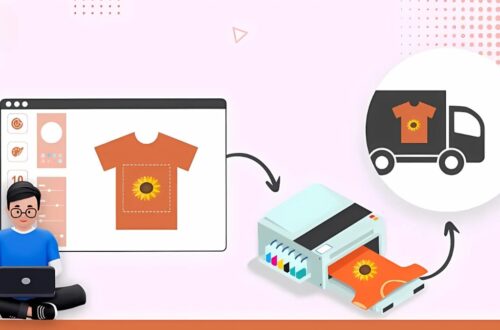
How to Sell Educational Worksheets Online: A Complete Guide for Teachers
Did you know that teachers on Teachers Pay Teachers collectively earned over $1 billion in revenue? That’s right – creating and selling educational worksheets has become a legitimate side hustle for educators worldwide! Whether you’re a seasoned teacher or a creative professional, turning your expertise into printable worksheets can generate substantial passive income. In this comprehensive guide, we’ll walk you through everything you need to know about selling worksheets online – from choosing your niche to marketing your products effectively.
Choosing Your Worksheet Niche
After three months of lackluster sales, I finally sat down and did what I should’ve done from the start: actual market research. Trust me, this made all the difference in the world. Today, I’m going to share exactly how to choose a worksheet niche that actually makes money, based on what I’ve learned over the years.
First things first – don’t just guess what teachers want. Head over to Teachers Pay Teachers and spend at least a week analyzing the “Recently Sold” sections in different categories. I discovered that while basic math worksheets were oversaturated, there was a huge demand for upper elementary math word problems incorporating social-emotional learning elements. Who would’ve thought? The key to sell educational worksheets successfully is finding these hidden opportunities.
Here’s what my research process looks like now:
I start by checking the bestseller rankings in different subjects and grade levels. Pro tip: pay special attention to resources with 100+ reviews but aren’t from the top sellers. These are your gold mines – they show proven demand but not impossible competition. For example, I found that 3rd-grade science worksheets focusing on experimental design were selling like hotcakes, but very few sellers were creating them.
Seasonal trends are another game-changer that most newbies overlook. Did you know that back-to-school shopping starts in June on most educational marketplaces? I learned this the hard way! Now I start creating my beginning-of-year assessment worksheets in April so they’re ready when teachers are shopping. To sell educational worksheets effectively, you need to think at least two seasons ahead.

But here’s the most important thing I’ve learned – your niche needs to align with both market demand AND your expertise. Sure, high school calculus worksheets might be profitable, but if you’re an elementary teacher like me, you’re better off sticking to what you know. The authenticity shows in your work, and teachers can spot a non-expert’s materials from a mile away.
Speaking of expertise, don’t forget to consider your passion. I originally tried creating grammar worksheets because they were trending, but I dreaded making them. When I switched to science and reading comprehension (my true loves), not only did my creativity flow better, but my sales actually improved because the quality was naturally higher.
One strategy that’s worked wonders for me is reaching out to actual teachers in Facebook groups (not to sell – that’s usually against group rules). Instead, I ask about their biggest classroom challenges. These conversations have led to some of my best-selling worksheet ideas. For instance, I created a series of differentiated reading comprehension worksheets after multiple teachers mentioned struggling with mixed-ability classrooms.
Remember, successful niches often lie at the intersection of three things: what teachers desperately need, what isn’t readily available, and what you’re genuinely good at creating. Take your time finding this sweet spot – it’s worth the initial investment of research time. After all, choosing the right niche is the foundation of building a sustainable worksheet business.
Creating High-Quality Educational Worksheets
Here’s the thing about worksheet design that took me way too long to learn: clean spacing is absolutely everything. I spent years teaching third grade, and I can’t tell you how many times I saw students get overwhelmed by cluttered worksheets. Now I follow what I call the “breathing room rule” – I leave at least 1.5 line spacing between questions and maintain consistent 1-inch margins. It seems simple, but it makes a huge difference in usability.
Let’s talk tools, because this is where I see many creators stumble. While you can sell educational worksheets using basic software, I’ve found that investing in the right tools saves countless hours. My go-to setup is Canva Pro for design elements (worth every penny!), combined with PowerPoint for layout (yes, PowerPoint – it’s surprisingly powerful for worksheet design). For math equations, I use Equation Editor, and for specialized graphics, I rely on Adobe Illustrator.
One of my most embarrassing moments came when I received an email from another teacher pointing out that I’d used copyrighted images in my worksheets. Talk about a wake-up call! Now I exclusively use either self-created graphics or properly licensed images from sites like Creative Fabrica or Creative Market. I keep a spreadsheet tracking all my image licenses – it’s saved me more than once.
Here’s my quality control checklist that I wish I’d had when starting out:
- Proofread everything three times (I print it out for one round – you’d be amazed what you catch on paper)
- Test all answer keys personally
- Check formatting at different zoom levels
- Verify that all instructions are crystal clear
- Ensure consistent font usage throughout
- Double-check image attribution and licensing
- Review for cultural sensitivity and inclusivity

Want to know my secret weapon for making worksheets engaging? I create what I call “stealth learning” elements. Instead of just asking students to solve problems, I weave in interesting facts or create mini-narratives throughout the worksheet. For example, my most popular multiplication worksheet follows a young scientist collecting data about endangered species – kids get so invested in the story that they forget they’re doing math!
Font choice matters more than you might think. After lots of trial and error, I’ve found that Comic Sans (I know, I know) actually works great for primary grades, while Verdana is perfect for upper elementary. For middle school and up, I stick with Arial or Calibri – professional but not intimidating.
Here’s a pro tip that revolutionized my worksheet creation: create templates! I spent one full weekend creating master templates for different types of worksheets, and it’s saved me hours upon hours of work. Each template has properly sized text boxes, consistent spacing, and preset styles. Now I can focus on creating great content instead of fiddling with formatting.
The most valuable lesson I’ve learned about selling educational worksheets successfully is this: every single element on your worksheet should serve a purpose. If it doesn’t help teach the concept or make the worksheet more user-friendly, it needs to go. Those cute decorative borders I used to love? They were actually distracting from the learning objectives.
I always include answer keys with detailed explanations – not just the answers. This came from feedback from substitute teachers who told me they needed to understand the process to help students effectively. It’s these little touches that help your worksheets stand out in a crowded marketplace and encourage repeat buyers.
Remember, when you sell educational worksheets, you’re not just selling paper with questions – you’re selling a teaching tool that needs to work seamlessly in a real classroom environment. Every design decision should support that goal. Start with these fundamentals, and you’ll be well on your way to creating resources that teachers actually want to buy and use.
Pricing Your Educational Resources
When I first started to sell educational worksheets, I made the classic newbie mistake – pricing everything at $1.99 because I was afraid to charge more. Let me tell you, that decision cost me thousands in potential earnings! Now, after years of experimentation and market research, I’ve learned that pricing is as much of an art as it is a science.
Here’s what I’ve discovered works best for pricing research: I keep a spreadsheet of the top 20 sellers in my niche and track their prices for similar resources. But don’t just look at the list price – pay attention to their sales numbers (you can estimate these from review counts) and their actual earnings. I found that while some $2 products were selling hundreds of copies, certain $12 products were making more money with fewer sales.
The game-changer for my business came when I started thinking about value-based pricing. When you sell educational worksheets that solve specific pain points – like my differentiated reading comprehension bundle that saves teachers hours of prep time – you can charge premium prices. Teachers are willing to pay more for resources that genuinely make their lives easier.
Let me break down my current pricing strategy:
- Single worksheets: $3-5 (depending on complexity)
- Small sets (3-5 worksheets): $8-12
- Comprehensive bundles: $15-25
- Full unit resources: $30-45
But here’s the thing about bundles that nobody told me: they’re not just about throwing random worksheets together. My most successful bundle came from tracking customer behavior. I noticed teachers often bought my fraction worksheets and decimal worksheets separately, so I created a “Converting Fractions to Decimals” bundle that included both plus some bonus activities. It sells for $18 (more than buying separately) but has become my best seller because it solves a complete teaching need.

Seasonal pricing has been another game-changer. During back-to-school season (July-September), I increase prices by about 20% because demand is high. However, I also run “new teacher” promotions during this time with special bundles designed for first-year teachers. During slower months like April, I’ll often create special themed bundles at slightly lower prices to maintain sales.
One pricing mistake I see creators make is undervaluing their editable resources. If you’re providing customizable worksheets that teachers can modify for their specific needs, charge at least 50% more than your standard PDF versions. The flexibility these offer is incredibly valuable to teachers.
Here’s a seasonal pricing tip that transformed my business: create “growing bundles.” I start these at a lower price point and gradually add more resources while increasing the price. Customers who buy early get a great deal and all future updates, while later purchasers still get value from the complete package. It’s been amazing for customer loyalty!
I’ve learned to pay special attention to pricing during key teaching transitions (like end of quarters or before standardized testing). That’s when teachers are desperately searching for review materials and are willing to pay premium prices for comprehensive resources. My “Test Prep Mega Bundle” is priced at $45 – my highest-priced item – but sells incredibly well during these periods because it provides massive value when teachers need it most.
Remember, pricing isn’t just about the number – it’s about positioning. When you sell educational worksheets that are thoughtfully created, professionally designed, and genuinely helpful, teachers recognize the value. Don’t be afraid to price your resources accordingly. After all, we’re creating tools that help educate the next generation – that’s worth more than just a couple of dollars.
Best Platforms to Sell Your Worksheets
Teachers Pay Teachers (TpT) is the undisputed giant in this space, and for good reason. When I first started to sell educational worksheets there, I was amazed by the built-in audience. Here’s the deal with TpT: they take a 45% commission if you’re on their free plan, or 20% if you pay for their Premium Seller membership ($59.95/year). The Premium membership paid for itself in my first month, so that’s a no-brainer if you’re serious about selling.
But here’s something most people don’t talk about – don’t put all your eggs in one basket! I learned this the hard way when TpT changed their algorithm one month and my sales dropped by 50%. Now I diversify across several platforms:
Teacherspayteachers: The biggest audience, highest traffic Boom Learning: Great for digital resources Teachers Notebook: Smaller but dedicated community Etsy: Surprising success with homeschool parents Your own website: Complete control but requires marketing
Let me tell you about my experience with setting up my own website. I spent three months building a beautiful Shopify store, thinking teachers would flock to it. Spoiler alert: they didn’t! While having your own site is great for brand building and collecting email addresses, driving traffic there is a whole different ball game. I now use my website primarily as a hub to collect email subscribers and then direct them to my marketplace listings.
Here’s a breakdown of the commission structures I’ve encountered:
- TpT: 20-45% commission
- Etsy: About 8% total fees
- Teachers Notebook: 15% commission
- Boom Learning: 15% commission
- Your own site: Just payment processing fees (about 3%)

One strategy that’s worked really well for me is platform-specific pricing. For example, I price items slightly higher on TpT to account for their higher fees, while keeping prices lower on my website to encourage direct sales. Just make sure to check each platform’s terms of service about price matching policies.
Managing multiple platforms can get overwhelming fast. I created a spreadsheet to track all my listings, prices, and sales across platforms. I also use Trello to manage my upload schedule – new resources go up on TpT first (since it’s my biggest platform), then I systematically add them to other platforms over the next few days.
Here’s a pro tip about platform features: each marketplace has unique tools you can leverage. TpT’s “Follow” feature is golden for building a customer base. Etsy’s tags system is incredible for SEO. Boom Learning’s digital integration is perfect for interactive worksheets. Learn these platform-specific features and use them to your advantage!
The most surprising lesson I’ve learned? Different types of resources sell better on different platforms. My basic worksheets do best on TpT, while my more creative, artistic resources perform better on Etsy. My digital interactive worksheets are top sellers on Boom Learning. Understanding these platform preferences helps me target my uploads more effectively.
One final piece of advice: don’t try to be everywhere at once. I made this mistake and burned out quickly. Start with one platform (I recommend TpT for beginners), master it completely, then gradually expand to others. It’s better to do really well on one platform than to do poorly on five.
Remember, successful multi-platform selling is all about understanding each marketplace’s unique audience and adjusting your strategy accordingly. Test different approaches, track your results meticulously, and don’t be afraid to pivot when something isn’t working. With time and patience, you can build a thriving worksheet business across multiple platforms.
Marketing Your Educational Worksheets
Building a teacher-creator brand was my first big challenge. I learned that it’s not just about having a cute logo (though I spent way too much time on that initially!). It’s about consistency and personality. I started sharing my actual classroom experiences and the stories behind why I created certain worksheets. For example, my most popular bundle came from a real struggle with teaching fractions to my third graders. When I started sharing these authentic stories, teachers really connected with my brand.
Social media has been a goldmine, but not in the way you might think. Instagram has been my secret weapon – not just for selling, but for research. I spend 30 minutes each morning checking popular teacher hashtags to see what challenges educators are facing. This helps me create and sell educational worksheets that solve real problems. My process looks like this:
- Post helpful teaching tips (not just product promotions)
- Share behind-the-scenes of worksheet creation
- Engage with teacher comments and questions
- Use Instagram Stories to poll teachers about their needs
- Participate in teacher Instagram challenges
Email marketing was a game-changer once I figured it out. Here’s what works for my list:
- Welcome sequence with a high-value freebie
- Weekly newsletter with teaching tips (not just sales)
- Early access to seasonal resources
- Exclusive bundles for subscribers
- Behind-the-scenes peaks at new resources
The biggest marketing revelation came when I started optimizing my product listings. Keywords are crucial, but not just any keywords. I learned to think like a tired teacher searching at 11 PM on a Sunday night. Instead of just “multiplication worksheets,” I use phrases like “differentiated multiplication word problems with real-world scenarios.” My sales jumped 40% after I rewrote all my descriptions this way!

Seasonal promotions require planning – I learned this the hard way after missing the back-to-school rush my first year. Now I have a marketing calendar:
- June: Prep back-to-school materials
- July: Launch early bird specials
- August: Heavy promotion of classroom setup resources
- September: Focus on assessment materials
- October-December: Holiday-themed resources
- January: New Year refresh materials
- February-March: Test prep season
- April-May: End-of-year activities
Pinterest has been surprisingly effective for marketing worksheets. I create vertical pins showcasing sample pages and include clear text about the grade level and subject. My monthly views went from 1,000 to 100,000 in six months using this strategy!
One of my cleverer marketing tactics has been creating “preview packets” – mini-versions of my resources that teachers can try before buying the full version. These act like samples and have dramatically increased my conversion rates. Plus, even if teachers don’t buy immediately, they get to experience the quality of my work.
Building relationships with other teacher-creators has been invaluable. We do bundle collaborations, share each other’s resources (when relevant), and provide feedback on new products. This community approach has helped expand my reach significantly.
Here’s a pro tip that doubled my sales: I started creating short tutorial videos showing exactly how to use my more complex resources. Teachers love seeing the worksheets in action, and it helps them envision using them in their own classrooms. I just use my phone to record quick 2-3 minute demonstrations.
Remember, marketing educational resources isn’t about being salesy – it’s about genuinely connecting with teachers and showing them how your resources can make their lives easier. Focus on building trust and providing value, and the sales will follow naturally.
Legal and Business Considerations
Here’s what I wish someone had told me about setting up a teaching business legally. First, you don’t need to go crazy with a complex business structure right away. I started as a sole proprietorship (the simplest option) and later moved to an LLC when my income grew. The key is to separate your personal and business finances immediately – get a dedicated business bank account and credit card from day one.
Tax obligations caught me completely off guard that first year. I had no idea I needed to pay quarterly estimated taxes! Now I set aside 30% of my earnings automatically in a separate savings account. Pro tip: use accounting software like QuickBooks Self-Employed or Wave to track everything. When I started tracking my expenses properly, I discovered I could deduct things like:
- Software subscriptions (Canva Pro, Adobe)
- Home office expenses
- Professional development courses
- Marketing costs
- Computer equipment
Let’s talk about protecting your intellectual property – something I learned about the hard way after finding my worksheets being resold on another website. Here’s my current protection strategy:
- Copyright notice on every page
- Watermarks on preview images
- Clear terms of use in every product
- Regular Google searches for my content
- DMCA takedown procedures ready to go
Speaking of terms of use, this is super important when you sell educational worksheets. My basic license allows teachers to:
- Use the worksheets in their own classroom
- Make copies for their students
- Save digital copies for personal use But prohibits:
- Sharing with other teachers
- Posting online
- Reselling or redistributing
Record-keeping became my best friend after that first tax surprise. I created a simple system:
- Monthly sales reports from each platform
- Expense tracking spreadsheet
- Receipt photos organized by quarter
- Income projection worksheet
- Inventory of all created resources

One thing that saved me during tax season was keeping meticulous records of platform fees and expenses. I use a digital filing system with folders for:
- Platform statements
- Payment processor fees
- Software subscriptions
- Marketing expenses
- Professional development
Here’s something nobody told me: you need to think about sales tax! While digital downloads often aren’t taxable, physical products are. I learned to use platforms’ built-in tax collection tools rather than trying to figure it out myself. It’s worth paying the extra fee for this service.
Insurance was another surprise consideration. After consulting with other teacher-creators, I got professional liability insurance. It’s not expensive (about $500/year), and it protects me if someone claims my resources caused harm or losses in their classroom.
The most valuable business tool I’ve implemented is a quarterly review system. Every three months, I analyze:
- Best-selling products
- Platform performance
- Revenue trends
- Expense patterns
- Tax obligations
- Marketing effectiveness
Remember, selling teaching resources is a real business, not just a hobby. Treat it professionally from the start, and you’ll avoid many of the painful lessons I learned the hard way. The peace of mind from having your legal and financial ducks in a row is worth every minute spent on organization and compliance.
Lastly, consider joining professional organizations like the Educational Publishers Association. They offer great resources for understanding the legal aspects of selling educational materials, plus networking opportunities with other creators. Having a community to turn to for business advice has been invaluable in my journey.
Selling worksheets online can be an incredibly rewarding venture, both financially and professionally. By following the strategies outlined in this guide, you’ll be well-equipped to create, market, and sell your educational resources successfully. Remember, the key to long-term success lies in consistently creating high-quality materials that genuinely help teachers and students. Ready to turn your teaching expertise into a profitable online business? Start with one niche, create your first worksheet set, and take that important first step today!





